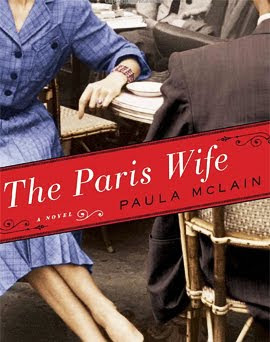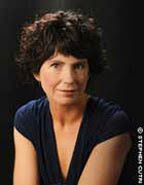 "I wish I had died before I loved anyone but her." — Ernest Hemingway
"I wish I had died before I loved anyone but her." — Ernest Hemingway When Hadley Richardson ran away with an aspiring writer, matured by his experiences in World War I, in the 1920s, it almost seemed like a dream come true. The exchange rate made it inexpensive and the most interesting people in the world were congregating — people like Gertrude Stein, James Joyce and Ezra Pound.
The young couple, hastily married in the States and funded by a small inheritance, rented a small walk-up at 74 Rue du Cardinal Lemoine in the Latin Quarter. And it was there (and in the small closet-like room rented next door) that Ernest Hemingway began to hone his craft, in between the occasional journalist assignments, and Hadley supported him.
It was an exciting time in Paris, perhaps one of the most brilliant. The Montparnasse was filled with artists like Pablo Picasso, Jean Cocteau, Henri Rousseau, and Beatrice Wood. It also seemed like the ideal location for any future writer in a city where cafes rented tables by the hour. Writers like D. H. Lawrence, F. Scott Fitzgerald, and Dorothy Parker had all taken up residence there. Why not a young Hemingway?
The Paris Wife glimmers with mentions, with a primary focus on the first wife.
Author Paula McLain paints a visual, visceral, and voyeuristic account of the couple, as told through Hadley Richardson's eyes. While fictional in tone and attitude, her work captures every possible corner of their lives, taking in details from letters, biographies, and Hemingway's own work to paint a canvas that spans six years and then some.
 It was here that Hemingway would encounter some of his initial successes, but also fall prey to the darker side of bohemian Paris with its liberal views on marriage, affairs, and lovers. While nothing overtly promiscuous occurs anywhere near the opening pages, the trappings of a fashionable society (and Hadley losing months and months of Hemingway's early work while boarding a train) offer up a foreshadow of the tests and tragedy to come.
It was here that Hemingway would encounter some of his initial successes, but also fall prey to the darker side of bohemian Paris with its liberal views on marriage, affairs, and lovers. While nothing overtly promiscuous occurs anywhere near the opening pages, the trappings of a fashionable society (and Hadley losing months and months of Hemingway's early work while boarding a train) offer up a foreshadow of the tests and tragedy to come. Still recovering from the loss of the work, Hadley becomes pregnant, prompting them to return to Toronto where they intend to have and then raise the baby. Hemingway himself considered the pregnancy and child terribly annoying, yet another hurdle preventing him from becoming the great writer he always knew he would become.
Hadley takes all of it in stride, sharing both torturous and tender moments but without ever becoming gushing. Sure, she is painted as doting on him with only occasional flashes of will that never quite match the emerging progressive, modern, or affluent women of the time. The real beginning of the end, however, takes place during their return in 1924.
Hadley will come across excitedly passive, perhaps too much so for some.
Although Hadley rarely minces words about people, the author weaves the story in such a way that she doesn't have to. Pauline Pfeiffer is painted as the aggressor and villain (an account that is sometimes unconvincingly refuted). A fashion writer for Vogue, Pfeiffer first befriends and then becomes an admired fan of Hadley, even encouraging her take her piano playing seriously.
And then, she transforms from Hadley's champion into a woman seeking Hemingway's approval and affection. It's near painful to watch, especially from the lens of a contemporary century. Although given an out in that it might have been unintentional, Pfeiffer changes from a dedicated friend to a third wheel and then, eventually, a mistress looking to win the young author.
McLain shares some of the affair in what can best be described as a brief interruption chapter (there are a few throughout the book). Such interruptions are probably necessary but bothersome at the same time (Hadley's autobiographical voice is the true driver and gem of this novel).
Where it works is the accounting of the affair; paper thin details that outline how the trappings were made possible before Hemingway tried to convince himself that affairs were as common to the Parisian culture as drinking wine or brandy. Where it doesn't work, it just doesn't.
Where it is most maddening, but true, is when Hadley, in an effort to save the marriage, agrees that the three can openly entertain the triangle and travel together to Pamplona. The forced arrangement slowly is where everything begins to deteriorate, causing pain to all three participants until Hadley eventually makes a decision no one else can.
A couple graphs about author Paula McLain.
It seems obvious McClain favors the depiction of Hemingway's memoir, A Moveable Feast (which was edited by his fourth wife Mary Hemingway), which notably paints Hemingway as stable and healthy. She even alludes to the idea that Hemingway's womanizing may have been on account of trying to rationalize his first affair.
 It's also suggested working on A Moveable Feast may have been a precursor or perhaps a contributor to his suicide. It doesn't mention his mental deterioration or paranoia. But it is clear that Hemingway, despite falling in love with another, never fell out of love with her.
It's also suggested working on A Moveable Feast may have been a precursor or perhaps a contributor to his suicide. It doesn't mention his mental deterioration or paranoia. But it is clear that Hemingway, despite falling in love with another, never fell out of love with her. This novel is a stark contrast to the witty and wise Major Pettigrew's Last Stand: A Novel, McLain's celebrated debut. But the story is no less engaging and easily makes you glad the economics student turned advertising executive decided to write novels. She currently lives with her husband and two sons in the Washington, D.C., area.
Paula McLain's The Paris Wife Is A Magical Tragedy At 7.5 On The Liquid Hip Richter Scale.
McLain originally stumbled upon the idea for the book because she wanted to write a novel set in the 1920s, which did lead her to A Moveable Feast. She was so taken by the young Hemingway, she eventually turn her attention to the biographies of Hadley Richardson. The writing is engrossing, but keep in mind the context. As a slice of life, it doesn't necessarily have a climatic lesson for a protagonist as much as a resolution. You know, like life.
The Paris Wife: A Novel can be ordered from Amazon or downloaded from iBooks via iTunes. You can also find the novel at Barnes & Noble. The audiobook is narrated by Carrington MacDuffie. This is a solid pick for anyone wiling to sacrifice traditional framing for a fictionalized account of Hemingway's early years as a writer told through the eyes of someone who loved him.
![Liquid [Hip]](https://blogger.googleusercontent.com/img/b/R29vZ2xl/AVvXsEjAFBQPqS7J0-rrttNoRYSsuwIePPZf4Nq6sqDioK1zzVQXJIQXKzq_NVNI4n6h3inuRQFBKOcJeZeSufkdHHIOxbSWyBjTjTxgKEQGyPzdwvkEEeECh4bI5YEGk4RWGUINSd7vulPQsCA/s1600-r/liquidhip.jpg)